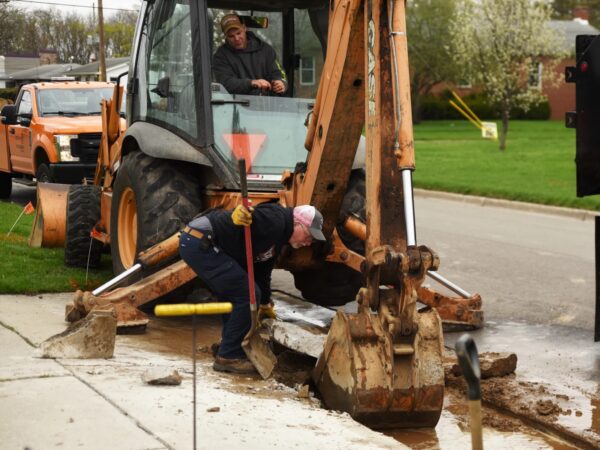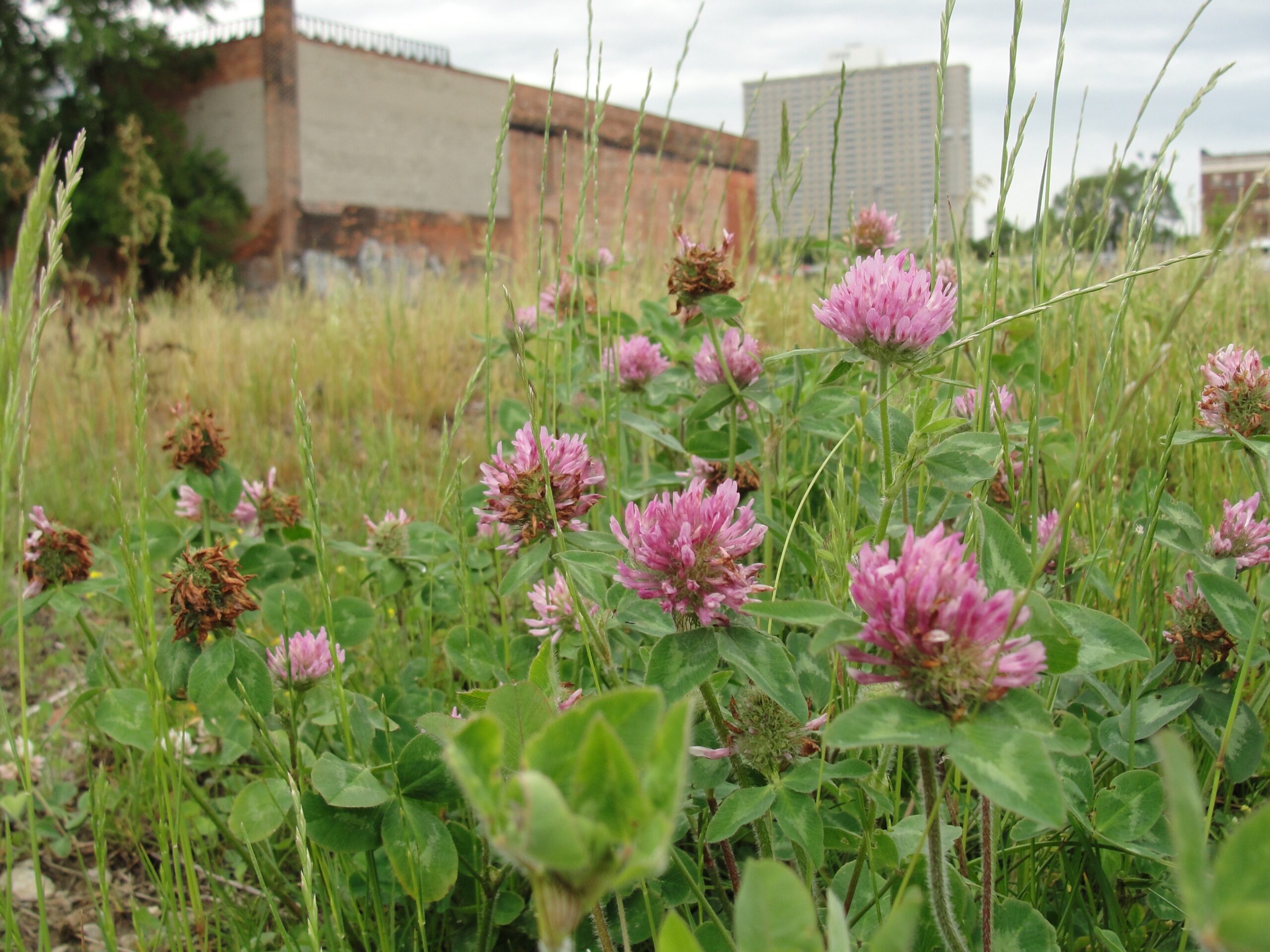
Foraging connects us with the natural world, offering a pathway to understand the land, its cycles, and the bountiful edible plants that grow wild around us. Whether you’re a novice eager to explore the greens outside your doorstep or an experienced forager looking to deepen your practice, this guide provides essential insights into starting your foraging journey, identifying plants, harvesting sustainably, and ensuring safety.
Getting Started
Foraging begins with a simple step: get outside. Familiarizing yourself with the local flora and the landscapes they inhabit forms the foundation of foraging. Observation and immersion in nature allow you to notice the subtle cues that indicate when and where to forage. Start in your immediate environment. Pay attention to the wild plants growing near you, document them through sketches, photos, or notes, and use a hand-drawn map to mark your discoveries. This process not only aids in plant identification but also fosters a deeper connection with your surroundings.
Identifying Plants
Knowing your plants is not just a part of foraging — it’s the essence of it. The ability to correctly identify plants is what separates safe foraging from risky ventures into the wild. Misidentification can have serious, even fatal consequences, making it imperative to be 100% sure of a plant’s identity before considering it for consumption. This certainty comes from a combination of observational skills, botanical knowledge, and continuous learning.
Before you consider collecting your very first plant, you must be able to correctly identify the plant and understand any potentially hazardous growing conditions.
Get to know botany by starting with the basics — understand how plants are organized. This includes learning about leaf arrangements (alternate, opposite, whorled), types of leaves (simple vs. compound), and other plant structures (stem types, root systems, flower arrangements). Familiarize yourself with botanical terms. Words like “petiole,” “lanceolate,” and “umbel” describe specific plant parts and shapes, providing a universal language to aid in identification, and these characteristics are often key to differentiating between species.
Sustainable Harvesting Practices
As foragers, we act as stewards of the land. It’s crucial to know the status of the plants you’re harvesting — are they abundant, endangered, or invasive? Sustainable harvesting means taking only what you need without impacting the plant’s ability to reproduce.
Familiarize yourself with the different habitats and microclimates in your area, and let the abundance or scarcity of plants guide your foraging. Ethical foraging is about forming a relationship with the environment, doing no harm, and leaving no trace.
Acknowledging Indigenous Land Rights in the Great Lakes Region
As we explore the bountiful landscapes of the Great Lakes for foraging, it’s imperative to recognize these lands as the ancestral territories of numerous Indigenous nations. The Great Lakes region is home to many First Nations and Native American communities that have nurtured and preserved these lands through generations, employing traditional knowledge and practices that are deeply intertwined with the region’s flora and fauna.
Acknowledging Indigenous land rights goes beyond recognizing historical occupation. It involves understanding the ongoing relationship between these nations and their territories, including the treaties that were meant to protect these rights, often violated or disregarded. It’s about respecting Indigenous sovereignty, culture, and the right to manage and benefit from their ancestral lands.
As foragers, acknowledging the legacy and rights of Indigenous peoples encourages a practice that is not only sustainable but also ethically grounded in respect for the land and its original caretakers. We must remember that our foraging activities are conducted on lands that have been occupied, stewarded, and cherished by Indigenous peoples long before us. By recognizing this, we can foster a deeper connection to the land, guided by principles of respect, sustainability, and shared stewardship.
Get Permission to Gather
Foraging on private or public lands requires permission. Many areas have regulations to preserve local flora and fauna, and it’s essential to adhere to these rules to promote sustainable practices. Whether it’s a municipal park or a friend’s backyard, always ensure you have the right to forage in the area.
Foraging laws can vary widely from one location to another, with some areas allowing limited foraging of certain species, while others may prohibit it altogether to protect local ecosystems.
Here are a few things to consider that may be relevant to an area near you:
- Municipal Parks: Check the websites of city or town parks and recreation departments. They often have rules regarding foraging, which can vary significantly.
- State and National Parks: These areas typically have more stringent regulations. The National Park Service and state Department of Natural Resources (DNR) websites provide guidelines on what is and isn’t allowed in terms of foraging.
- Federal Regulations: If you’re near federal lands, including national forests and grasslands, the U.S. Forest Service has regulations regarding foraging. These can usually be found on their official website or by contacting the nearest Forest Service office. Regulations can vary, with some areas allowing for the collection of certain plants or mushrooms for personal use without a permit.
- Check for Special Permits: Some areas may require permits for foraging, even for personal use. This is more common for high-impact or highly sought-after species. Check with local DNR offices or park management to see if such permits are necessary.
- Private Land Permissions: Always get explicit permission from landowners before foraging on private property. This not only respects the property owner’s rights but ensures you’re legally covered to forage in that area.
By thoroughly researching and respecting the legal boundaries set for foraging, you contribute to the sustainability and preservation of natural spaces while enjoying the bounty they offer. Always prioritize the health of the ecosystem and the legal guidelines established to protect these areas.
Consider Pollution Risks
Understanding the land’s history and potential contaminants is crucial for foragers to ensure the safety of collected plants. Different environments pose varying risks, from urban heavy metal contamination to agricultural runoff, affecting plant health and edibility. Remember these steps:
- Research the Land: Before foraging, investigate the area’s history and potential contamination sources through public records or inquiries with landowners.
- Avoid Known Contaminated Areas: Steer clear of sites with a history of industrial use, heavy pesticide application, and areas near railroad tracks or heavily trafficked roads.
- Focus on Low-Risk Plants: Some plants are less likely to uptake contaminants; prioritize these for safer foraging outcomes.
By being diligent about the locations chosen for foraging, individuals can significantly reduce the risks of contamination, ensuring the safety and sustainability of their practice.
- Urban Areas: Heavy metals and lead, common in brownfields and old industrial sites, are absorbed by plants, making some unsafe for consumption. Railroad tracks, treated with chemicals, also pose a risk of arsenic contamination.
- Suburban Zones: The use of herbicides and pesticides in lawn care, golf courses, and landscaping introduces chemicals that can be absorbed by wild plants.
- Agricultural Pollution: Agricultural lands are affected by nitrates, fertilizers, and manure runoff, leading to potential E-Coli and Salmonella contamination in nearby plants and water sources.
- Industrial and Municipal Pollution: Activities in these sectors can lead to a variety of pollutants entering the soil and water, including:
- Heavy Metals: From manufacturing, painting, and pharmaceutical companies.
- Chemical Residues: From sewage overflows, fracking, and industrial processes.
- Herbicides and Chemicals: Used in easements, road maintenance, and park conservation efforts.

Red clovers in an urban lot. (Photo Credit: Lisa M. Rose)
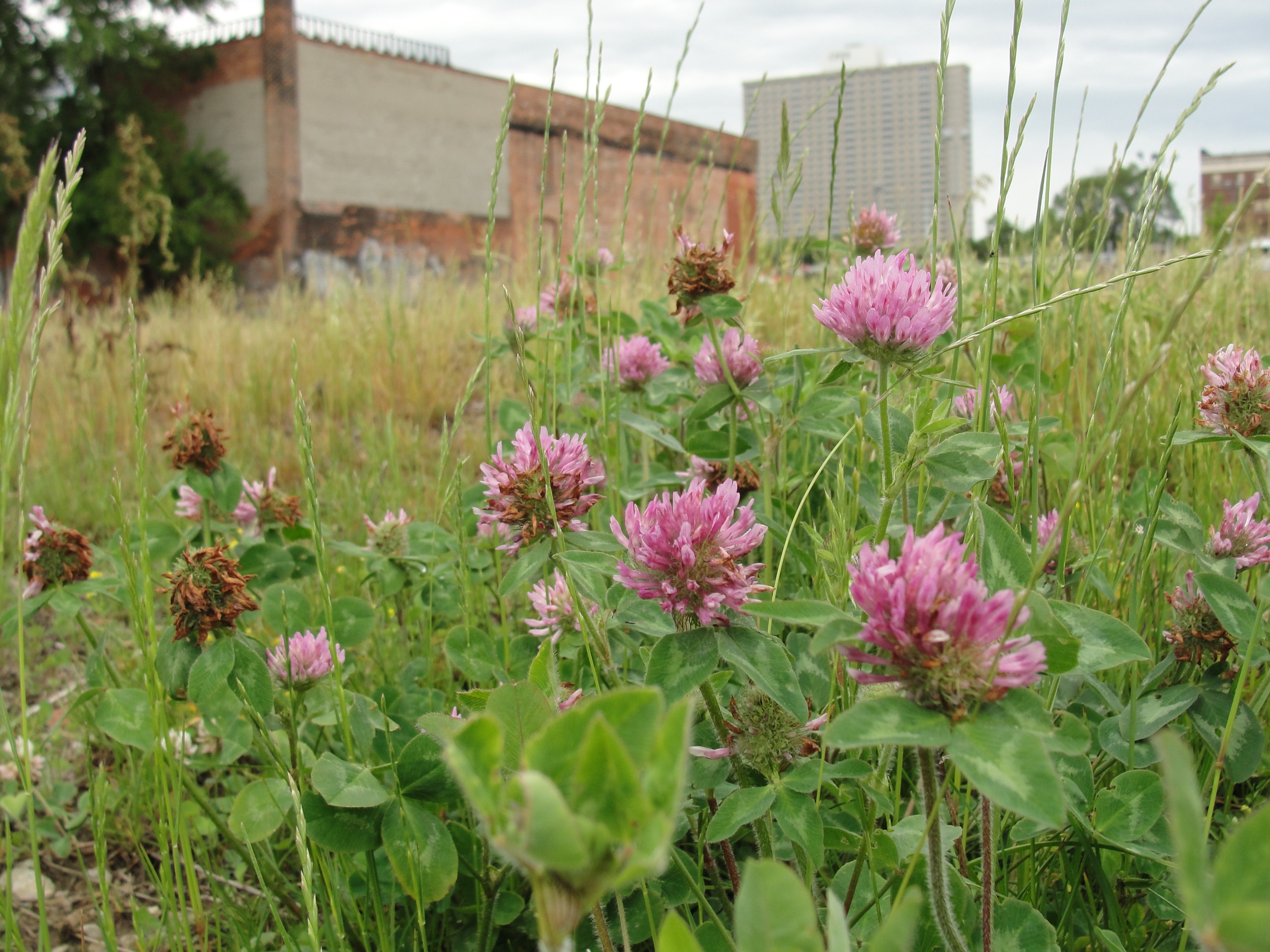 Resources to Explore
Resources to Explore
Field Guides and Botanical Resources: Invest in quality field guides specific to the Great Lakes region, as plants can vary significantly by geography. Digital apps and websites offer supplementary information, but always cross-reference to avoid reliance on potentially inaccurate sources.
- USDA PLANTS Database (Plant List of Attributes, Names, Taxonomy, and Symbols)
To help your readers understand the conservation status and learn more about the ecosystems of the Great Lakes region, you might recommend the following resources:
- United States Department of Agriculture (USDA) Plants Database: This site provides comprehensive information on plant distribution and status across the United States, which can help foragers identify whether a species is considered threatened in their area. (USDA Plants Database)
- NatureServe Explorer: An online source for authoritative conservation information on more than 70,000 plants, animals, and ecosystems of the United States and Canada, which includes detailed reports on species’ conservation status. (NatureServe Explorer)
- Local Cooperative Extension Offices: These offices often provide region-specific information and workshops on native plants, sustainable foraging, and conservation practices. They can be a great local resource for foragers in the Great Lakes region.
Hands-On Learning: There’s no substitute for experience. Spend time in nature with your field guide, comparing the live plants you find with the descriptions and images in your guide.
Botanical Gardens and Herbariums: These can be invaluable resources for learning plant identification. Many botanical gardens label their plants, offering a real-life reference to study and compare against wild specimens.
Workshops and Foraging Walks: Look for local workshops or guided walks led by experienced foragers or botanists. These experiences can provide insights and tips not found in books, and allow for real-time questions and answers.
Nathan Wright
More InformationJim Mcdonald
More InformationRachel Mifsud
More InformationJoin a Community: Foraging and botanical groups, both online and in-person, can offer support, answer questions, and share experiences. Learning from others can accelerate your understanding and identification skills.
Michigan Foraging and Outdoors
More InformationGreat Lakes Herbal Cooperative
More InformationKeep a Foraging Journal: Document your foraging journeys with notes and pictures of plants you encounter. This not only helps in solidifying your knowledge but also tracks your growth as a forager over time.
Be Humble and Cautious: No matter how experienced you become, always approach foraging with humility and caution. Nature is vast and complex, and there’s always more to learn. If in doubt, don’t forage it.
Seasonal Bounty: A Great Lakes Foraging Quick Guide
This seasonal quick guide provides a starting point for foragers in the Great Lakes area, emphasizing the rich variety of plants that can be harvested throughout the year. As always, ensure proper plant identification, harvest sustainably, and be aware of local regulations and contamination risks to enjoy the bounty of the Great Lakes region safely.
A few considerations for our region:
- Microclimates: The Great Lakes create unique microclimates that can extend or shorten growing seasons. Pay attention to local conditions.
- Invasive Species: Be aware of and consider harvesting invasive species where safe and legal to do so, such as Garlic Mustard, to benefit native ecosystems.
- Pollution Concerns: Be mindful of water quality, especially near urban and agricultural runoff areas, when foraging near water bodies.
While each plant showcased in this guide is relatively safe, you must be certain in your plant identification. And as with introducing any new food or herb into your diet, do so with care to eliminate any potential for adverse reactions.
Foraging Early Spring
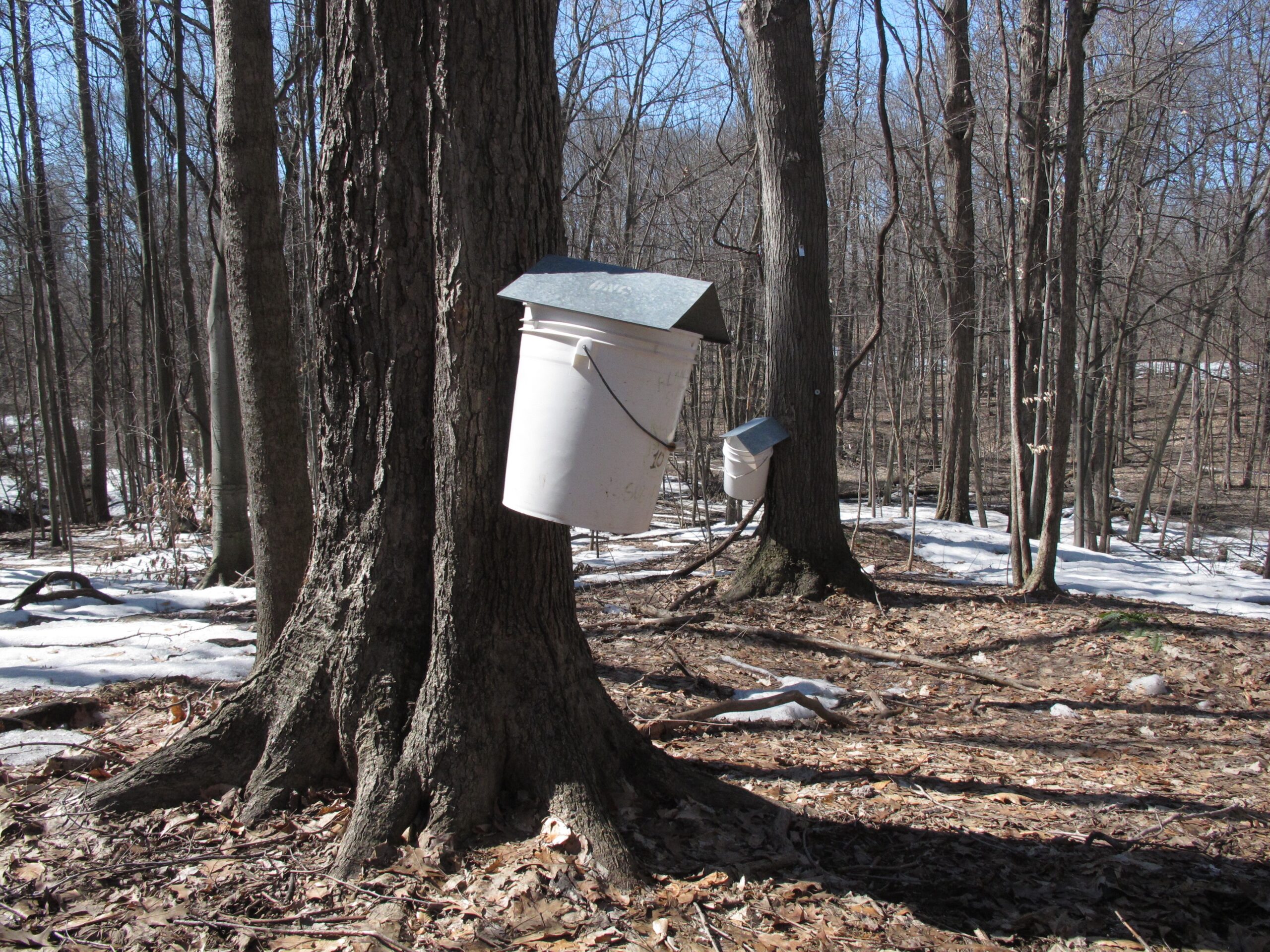
Sugar maple sap harvest. (Photo Credit: Lisa M. Rose)
As the ice and snow begin to melt, the first green shoots emerge, offering a variety of plants for the early forager.
- Open Fields and Edges of Woods: Look for early greens such as Dandelion (leaves, roots), Chickweed (stems, leaves, flowers), and Plantain (leaves). Burdock (roots, shoots) can also start to be harvested.
- Wetlands and Lakesides: The tender leaves of Nettle, rich in vitamins, can be found in these moist areas.
- Woodlands: The sap of Maple trees starts running, ideal for tapping. Pine (needles, bark) and Blackberry (leaves) are also accessible in partially shaded woodlands.
Foraging Mid- to Late Spring
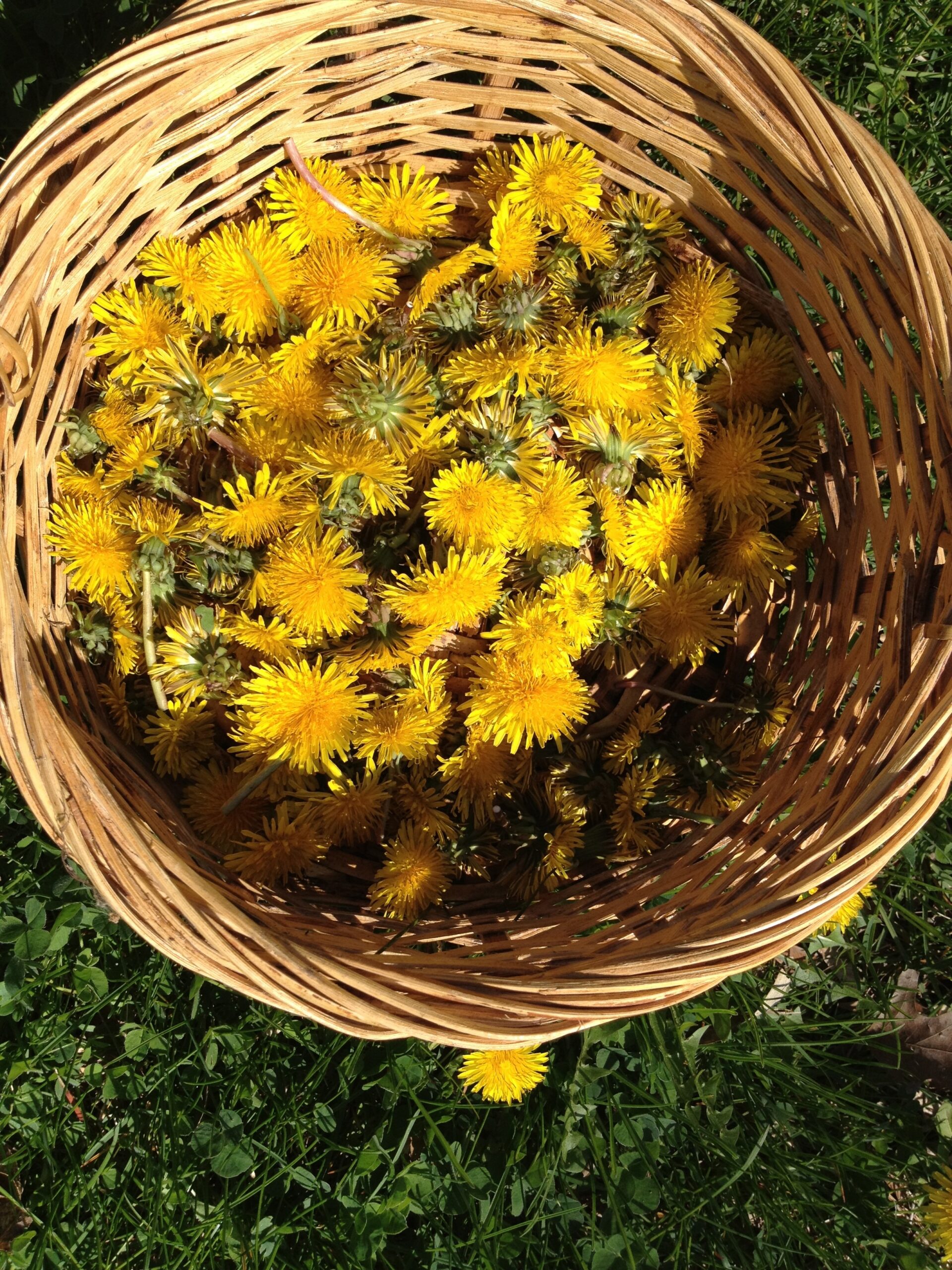
Dandelion flower harvest. (Photo Credit: Lisa M. Rose)
As the climate warms, the region’s flora begins to diversify further.
- Open Fields and Edges of Woods: This is the prime time for Red Clover (leaves, flowers), Violet (leaves, flowers), and Dandelion (flowers). Raspberry (leaves) and Apple (flowers) start to become available.
- Wetlands and Lakesides: Peppermint and Spearmint leaves can be harvested. Nettle continues to be available and is at its most tender.
- Woodlands: Morel Mushrooms, a regional delicacy, can be found. Oak (bark) and Spruce (needles) are good for harvesting.
Foraging Summer
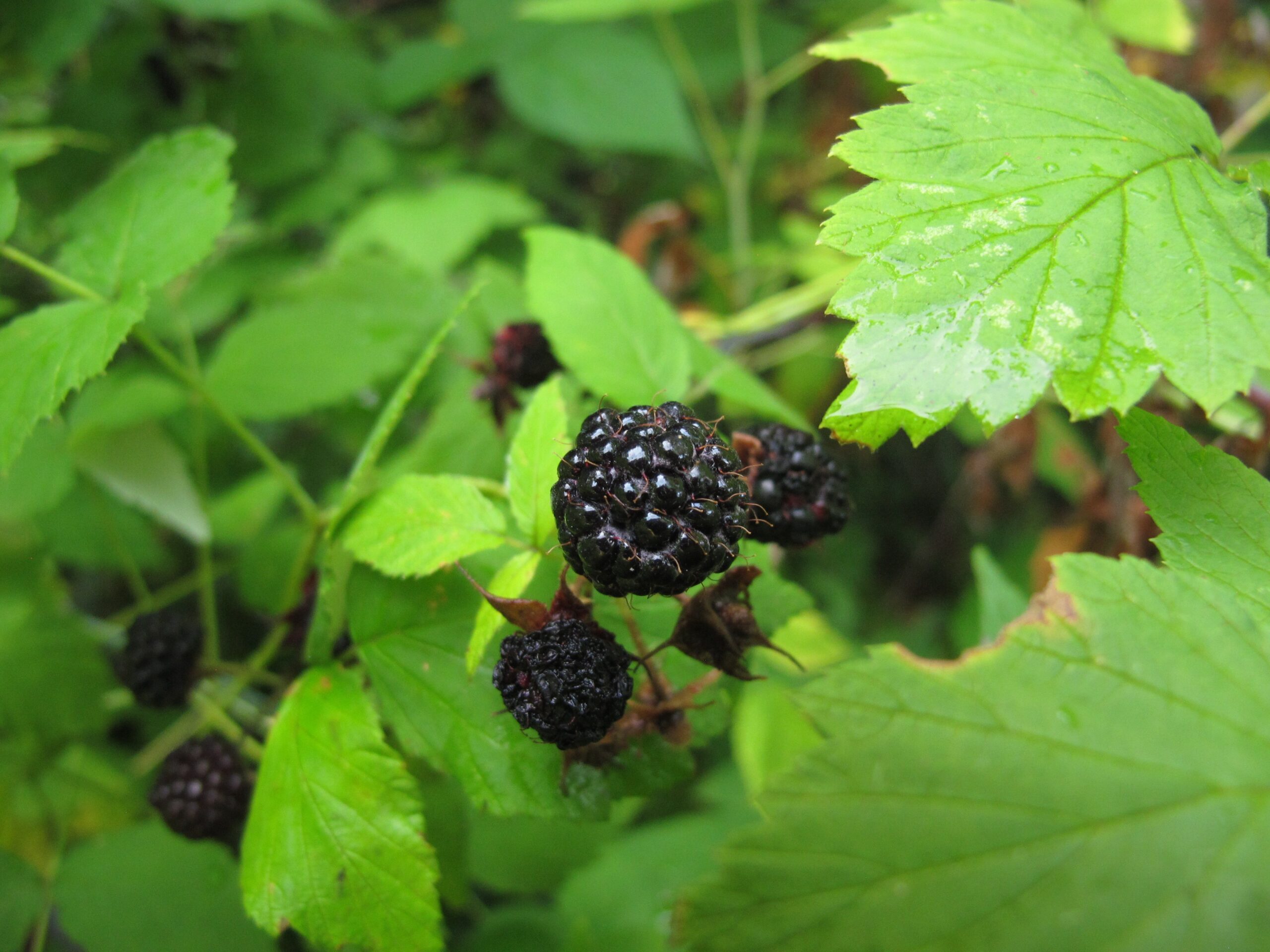
Black raspberry fruits. (Photo Credit: Lisa M. Rose)
The full bounty of the region becomes available with an abundance of berries and flowers.
- Open Fields and Edges of Woods: Wild Berries, including Blueberries and Strawberries, begin to ripen. Yarrow (flowers) and Goldenrod (leaves, flowers) are widely available.
- Wetlands and Lakesides: Elder (flowers) are ready for picking, perfect for making syrups and teas.
- Woodlands and Partial Shade: The Pine (needles) can be harvested for teas rich in Vitamin C.
Foraging Fall
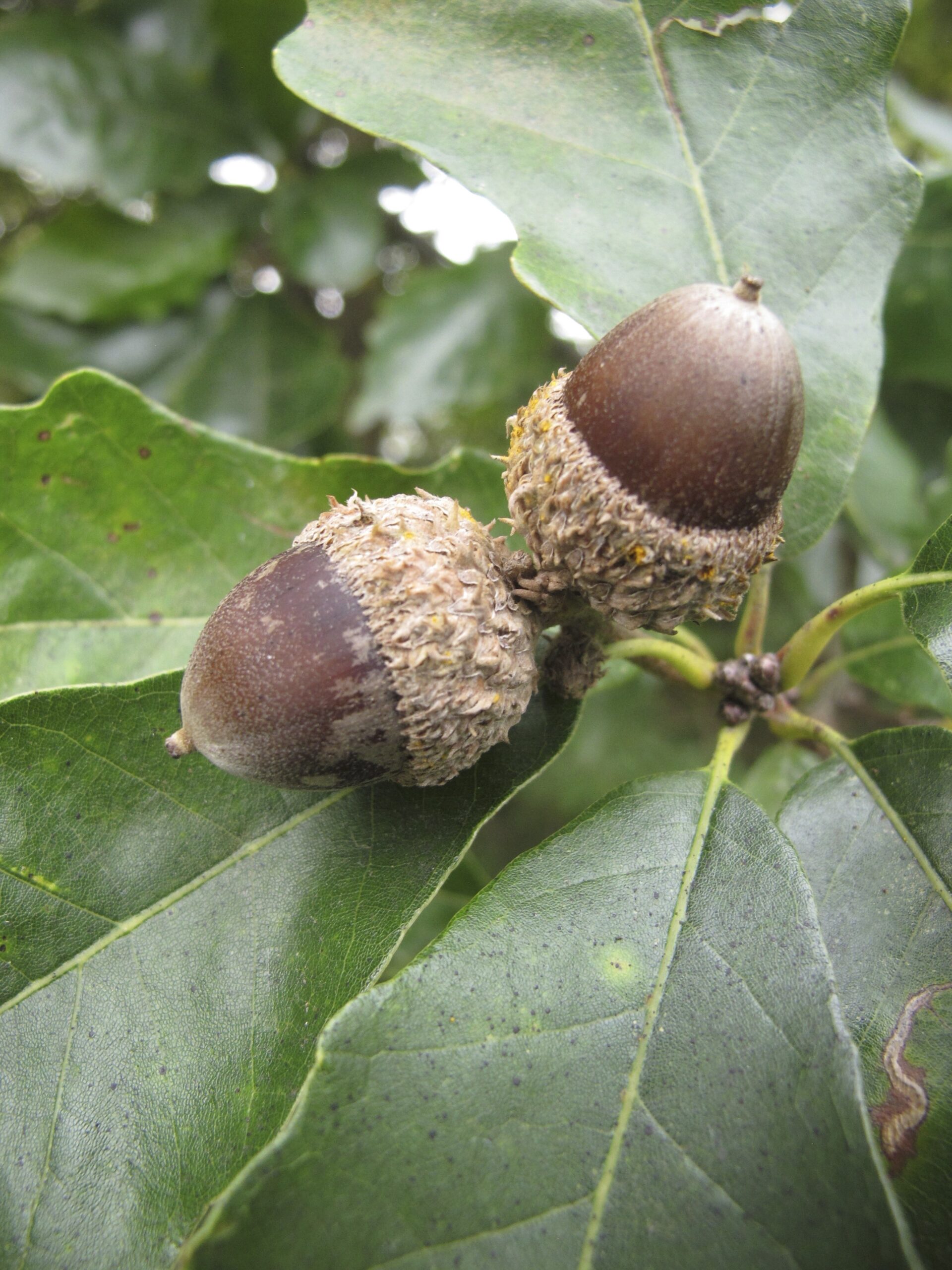
White tree acorn. (Photo Credit: Lisa M. Rose)
As the temperatures cool, the focus shifts towards roots and late-season fruits.
- Open Fields and Edges of Woods: It’s time for Apple (fruit) harvesting and collecting Rose (hips) for Vitamin C. Burdock (root, seeds) and Dandelion (roots) are ideal for fall harvesting.
- Wetlands and Lakesides: Late Nettle leaves can still be found, along with Peppermint and Spearmint for fresh teas.
- Woodlands and Partial Shade: Oak (acorns) can be processed for flour, and it’s also a good time to gather Pine (needles) before the snow.
Foraging Winter
Though the landscape may seem dormant, there are still foraging opportunities.
- General: Winter is an excellent time for tree bark identification and collection, such as Birch for tea. Rose (hips) can be collected throughout winter if not yet harvested.
About the Author
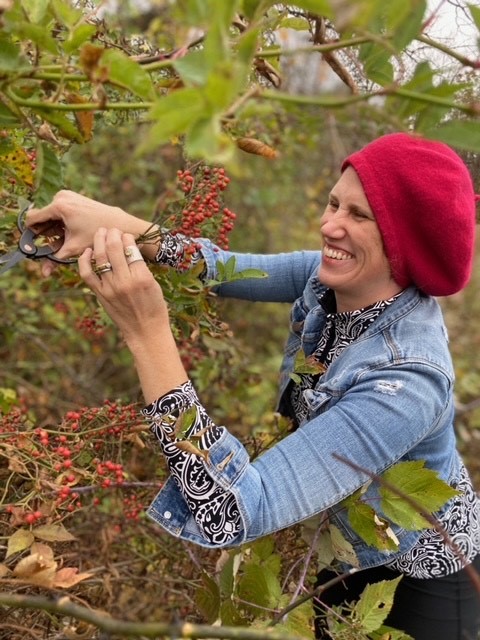
Lisa M. Rose is an ethnobotanist, wild foods chef, and author with a profound dedication to exploring the symbiotic relationship between humans and plants. With an academic background in anthropology and community health, her culinary journey has been rich and varied, including stints with notable establishments and figures such as Stags Leap in Napa Valley, Alice Waters’ The Edible Schoolyard, and organic farmers in Northern Michigan.
Rose’s work is celebrated in her bestselling books, “Midwest Foraging” and “Midwest Medicinal Plants,” among others and her expertise is frequently sought by major media outlets, including the Chicago Tribune, PBS, NPR, Martha Stewart and CNN.
Catch more news at Great Lakes Now:
Composting, water access and backyard chickens: Detroit’s urban farming evolution
Waves of Change: Meet herbalist and forager Monica Cady
Feature image: Red clovers in an urban lot. (Photo Credit: Lisa M. Rose)


